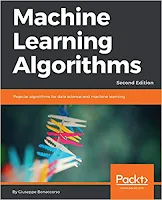Structural Dynamics Fundamentals and Advanced Applications Volume: 1
Alvar M. Kabe, Brian H. Sako ... 1496 pages - Language: : English - AmazonSIN : B08CBZMV3F - Publisher : Academic Press; (June, 2020).
The two-volume work, Structural Dynamics Fundamentals and Advanced Applications, is a comprehensive work that encompasses the fundamentals of structural dynamics and vibration analysis, as well as advanced applications used on extremely large and complex systems. Volume I covers Newton’s Laws, single-degree-of-freedom systems, damping, transfer and frequency response functions, transient vibration analysis (frequency and time domain), multi-degree-of-freedom systems, forced vibration of single and multi-degree-of-freedom systems, numerical methods for solving for the responses of single and multi-degree-of-freedom systems, and symmetric and non-symmetric eigenvalue problems. In addition, a thorough discussion of real and complex modes, and the conditions that lead to each is included. Stochastic methods for single and multi-degree-of-freedom systems excited by random forces or base motion are also covered.
Dr. Kabe’s training and expertise are in structural dynamics and Dr. Sako’s are in applied mathematics. Their collaboration has led to the development of first-of-a-kind methodologies and solutions to complex structural dynamics problems. Their experience and contributions encompass numerous past and currently operational launch and space systems. The two-volume work was written with both practicing engineers and students just learning structural dynamics in mind + Derivations are rigorous and comprehensive, thus making understanding the material easier + Presents analysis methodologies adopted by the aerospace community to solve extremely complex structural dynamics problems.
The two-volume work, Structural Dynamics Fundamentals and Advanced Applications, is a comprehensive work that encompasses the fundamentals of structural dynamics and vibration analysis, as well as advanced applications used on extremely large and complex systems. Volume I covers Newton’s Laws, single-degree-of-freedom systems, damping, transfer and frequency response functions, transient vibration analysis (frequency and time domain), multi-degree-of-freedom systems, forced vibration of single and multi-degree-of-freedom systems, numerical methods for solving for the responses of single and multi-degree-of-freedom systems, and symmetric and non-symmetric eigenvalue problems. In addition, a thorough discussion of real and complex modes, and the conditions that lead to each is included. Stochastic methods for single and multi-degree-of-freedom systems excited by random forces or base motion are also covered.
Dr. Kabe’s training and expertise are in structural dynamics and Dr. Sako’s are in applied mathematics. Their collaboration has led to the development of first-of-a-kind methodologies and solutions to complex structural dynamics problems. Their experience and contributions encompass numerous past and currently operational launch and space systems. The two-volume work was written with both practicing engineers and students just learning structural dynamics in mind + Derivations are rigorous and comprehensive, thus making understanding the material easier + Presents analysis methodologies adopted by the aerospace community to solve extremely complex structural dynamics problems.


